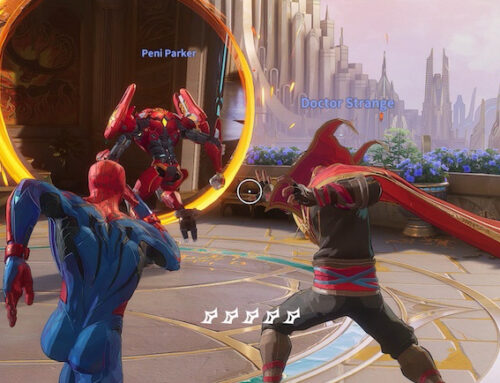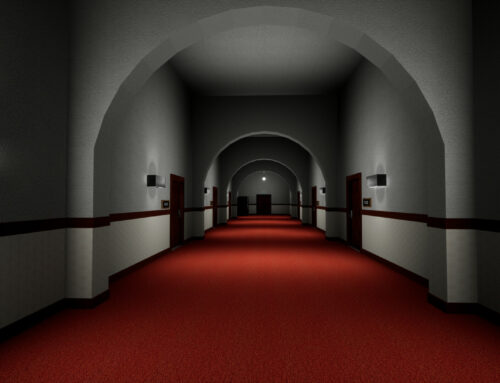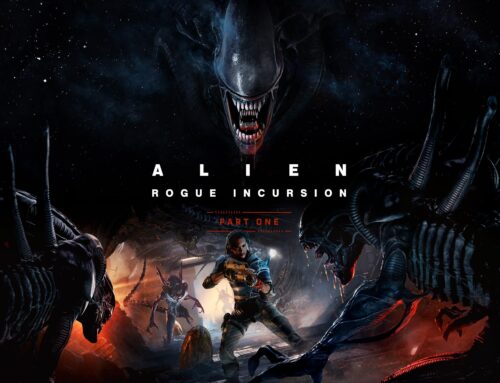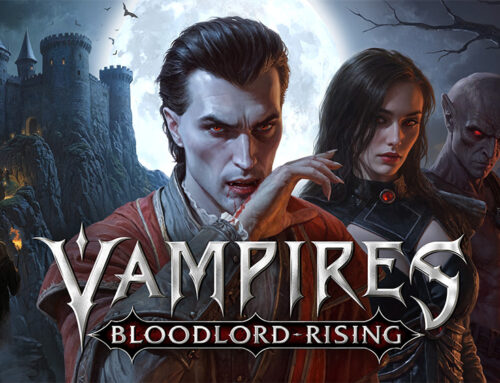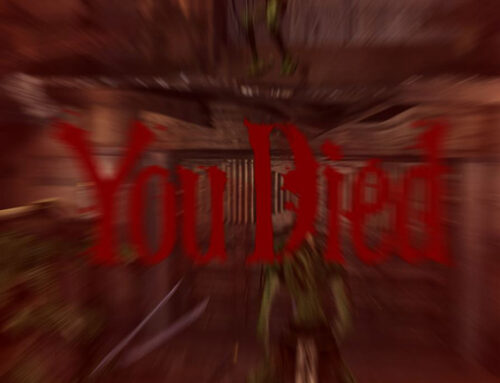 “A Wolf In Autumn” is the second video game that David Szymanski released last year, five months after “The Music Machine.” Given my experience with Szymanski’s past work, I thought I knew what I was getting into. I did not.
“A Wolf In Autumn” is the second video game that David Szymanski released last year, five months after “The Music Machine.” Given my experience with Szymanski’s past work, I thought I knew what I was getting into. I did not.
Much like with Szymanski’s other works, “A Wolf In Autumn” thrusts the player into a situation with very little background. The game starts with three brief vignettes: one is a woman talking about what it is to be a woman and have pride, then a twisting shot of a sparse room where the player can hear an argument in an adjacent room, and finally a peaceful shot of the ocean. At the player gains control of Autumn, a young one-handed girl who wakes up locked in a shed in an enclosure in the middle of the woods. As Autumn engineers her escape from the compound, the connection between the vignettes and the current situation slowly becomes apparent. Without spoiling anything, the story does deal with some very heavy themes that some people may find uncomfortable.
“A Wolf In Autumn” looks very different from Szymanski’s previous games. Gone are the muted tones of “The Moon Sliver” and the two-tone visuals of “The Music Machine.” Instead, “Wolf” is full of bright, over-saturated colors. This creates a wonderfully delirious sort of feeling which really helps create the game’s surreal atmosphere. The models for the objects seem a little smoother than in Szymanski’s previous works as well, though the textures are all still fairly simple. Overall, it’s definitely a visual step-up from his previous work from a technical standpoint, and from an aesthetic standpoint it continues his love affair with heavily stylized use of color.
 The audio of “A Wolf In Autumn” is also a definite improvement for Szymanski. There is a heavy emphasis placed on ambient sound effects, and those all come off without a hitch. While there isn’t really very much music in “Wolf” it’s generally pretty effective when it does show up. However, the real strength of the game’s audio department is its voice acting. Throughout the game, Autumn hears messages from her mother (voiced by Julie Hoverson) broadcast to her by a strange tin machine. The role that Hoverson has to voice is a difficult one; Autumn’s mother is a fairly complex character given the handful of lines that she has. Hoverson more than rises to the challenge, though. She takes the two dozen or so lines that she’s given and creates a fully realized character out of them.
The audio of “A Wolf In Autumn” is also a definite improvement for Szymanski. There is a heavy emphasis placed on ambient sound effects, and those all come off without a hitch. While there isn’t really very much music in “Wolf” it’s generally pretty effective when it does show up. However, the real strength of the game’s audio department is its voice acting. Throughout the game, Autumn hears messages from her mother (voiced by Julie Hoverson) broadcast to her by a strange tin machine. The role that Hoverson has to voice is a difficult one; Autumn’s mother is a fairly complex character given the handful of lines that she has. Hoverson more than rises to the challenge, though. She takes the two dozen or so lines that she’s given and creates a fully realized character out of them.
“A Wolf In Autumn” contains more traditional gameplay than Szymanski’s previous work. There is a much heavier emphasis on puzzle-solving than there was in “The Music Machine,” and the world here is much more interactive. There’s something very interesting about the puzzles themselves, they have multiple solutions. For example, at one point in the game Autumn has to remove a rope holding a door shut, and the player can chose to cut it with a shard of broken glass or burn through it with a lighter (and possibly other solutions I didn’t try). This seems obvious, but it is actually quite revolutionary. Usually in a video game, such a puzzle would have one “right” method of solving it, even if other ways should realistically work. For example in a game like “Bloodborne” there are times when a key is  needed to open a door, even if the player has a giant hammer that they could realistically use to knock the door down. Perhaps the most egregious example of this is in “Silent Hill 2” where the player has to open a trap door that’s missing a handle; the correct solution isn’t to try to use a crowbar or something to pry it open but instead to use a cigarette lighter to melt a wax figurine into the place where the handle should be and then insert a horseshoe into the wax to create a new handle. It is something that has just become an accepted part of video games but with “Wolf” Szymanski is just casting that tradition aside in favor of something realistic. I really believed that I would never see a game implement a system like this. I am in complete awe of what Szymanski has accomplished here.
needed to open a door, even if the player has a giant hammer that they could realistically use to knock the door down. Perhaps the most egregious example of this is in “Silent Hill 2” where the player has to open a trap door that’s missing a handle; the correct solution isn’t to try to use a crowbar or something to pry it open but instead to use a cigarette lighter to melt a wax figurine into the place where the handle should be and then insert a horseshoe into the wax to create a new handle. It is something that has just become an accepted part of video games but with “Wolf” Szymanski is just casting that tradition aside in favor of something realistic. I really believed that I would never see a game implement a system like this. I am in complete awe of what Szymanski has accomplished here.
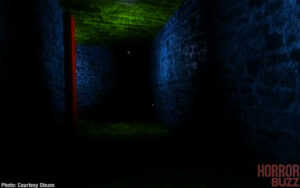 Before playing “A Wolf In Atumn,” I did not think that my respect and love for David Szymanski’s games could get any greater. I was wrong. With “A Wolf In Autumn” he has fine-tuned some of the weaker aspects of his older games, then made them more interactive and bucked long-standing and frustrating video game tradition. All in a game that sells for two dollars. While it still may not be to everyone’s liking, “Wolf” will doubtlessly have a broader appeal than his previous works, given that it has swapped out the “walking simulator” elements for a more puzzle-based approach. It is a truly great and deeply unsettling game.
Before playing “A Wolf In Atumn,” I did not think that my respect and love for David Szymanski’s games could get any greater. I was wrong. With “A Wolf In Autumn” he has fine-tuned some of the weaker aspects of his older games, then made them more interactive and bucked long-standing and frustrating video game tradition. All in a game that sells for two dollars. While it still may not be to everyone’s liking, “Wolf” will doubtlessly have a broader appeal than his previous works, given that it has swapped out the “walking simulator” elements for a more puzzle-based approach. It is a truly great and deeply unsettling game.

